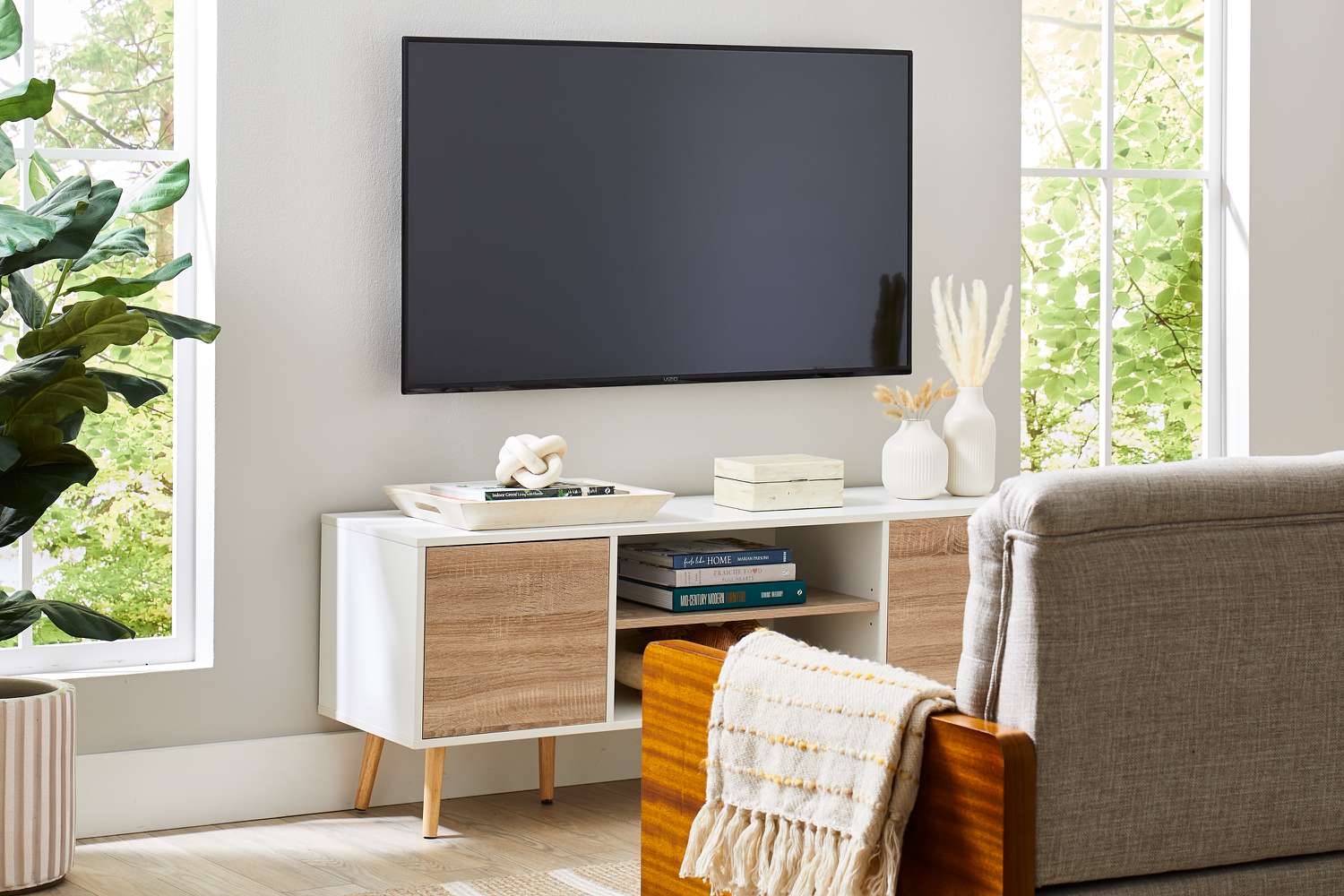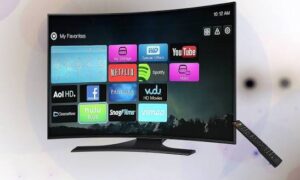1. Introduction
Mounting your TV at the right height can make a huge difference in your viewing experience. If it’s too high, you might strain your neck; too low, and it could feel awkward or uncomfortable. Yet, many homeowners mount their TVs based on aesthetics or furniture placement rather than ergonomics. The result? Hours of watching with poor posture, glare issues, and eye fatigue.
So, what is the optimal height to mount a TV?
The quick answer: the center of your screen should be at your eye level when you’re sitting comfortably. For most people, this means the center of the TV should be about 42 to 48 inches from the floor in a standard living room setting. However, the ideal height can vary depending on several factors — including the size of your TV, the layout of your room, your viewing distance, and whether you’re mounting the TV in a bedroom, kitchen, or above a fireplace.
This guide will walk you through everything you need to know to get it right. We’ll cover room-specific recommendations, mounting types, and even provide you with a simple formula and table to calculate the perfect height for your setup.
2. Key Factors That Affect TV Mounting Height
- TV Size: Larger screens shift the center point higher, requiring lower placement of the bottom edge.
- Room Type: Living room, bedroom, kitchen, and office all require different viewing angles and considerations.
- Eye Level While Viewing: Your usual sitting or reclining position affects the optimal center height.
- Viewing Distance: The farther back you sit, the less critical minor height adjustments become.
- Mount Type: Tilting or articulating mounts allow for higher placements with adjustable angles.
3. General Mounting Height Guidelines
Here’s a table with recommended mounting heights (from the floor to the bottom of the screen) based on screen size and room type:
| TV Size | Living Room | Bedroom | Kitchen |
| 50″ | 26″–28″ | 30″–34″ | 40″–50″ |
| 55″–65″ | 24″–26″ | 28″–32″ | 38″–48″ |
| 70″–82″ | 20″–24″ | 26″–30″ | 36″–46″ |
| Over 82″ | 18″–22″ | 24″–28″ | 34″–44″ |
4. Living Room Setup
The living room is usually where people spend the most time watching TV, so mounting it at the right height is crucial. Align the center of the TV with your eye level when seated — typically around 42 inches from the floor. For a 65″ TV with a 32″ screen height, the bottom should be around 26″ from the floor.
Consider the height of your sofa and distance from the screen. If you recline deeply or have multiple seating areas, a tilting mount may help optimize the angle. Avoid mounting too high just to match wall decor — comfort should always come first.
5. Bedroom Setup
In the bedroom, you’ll likely watch while lying down or reclining. That allows for a slightly higher mount, typically 4–8 inches higher than in the living room. Use a tilting wall mount so the screen can angle downward toward your eyes.
A fixed mount may not work well here unless your bed is unusually high. Also, make sure the wall above your bed is strong enough to support the TV safely.
6. Kitchen or Office Mounting
In kitchens or offices, you’re usually standing or multitasking. That means the TV can be mounted higher — even 50 to 60 inches to the center of the screen. Use a tilt or full-motion mount to direct the angle downward.
In an office setup, if the TV is used for meetings or as a secondary monitor, consider keeping it at eye level when seated. And remember to manage glare from windows and lighting.
7. Mount Type and Its Impact on Height
- Fixed Mounts: Ideal if the TV is already perfectly placed at eye level. No angle adjustment available.
- Tilting Mounts: Great for higher placements; tilt the screen downward for better comfort and reduced glare.
- Full-Motion Mounts: Offers maximum flexibility — pull out, tilt, and swivel. Ideal for corner mounting or open rooms.
Choosing the right mount gives you height flexibility and helps fix placement mistakes without remounting.
8. How to Measure and Calculate the Best Height
Use the free TV Mount Height Calculator at TVMounty.com. It calculates:
- Optimal height based on your setup
- Exact position of the screen’s bottom edge
- Recommended tilt angle
- Best wall mount type for your situation
It’s quick, free, and takes the guesswork out of the process.
9. Common Mistakes to Avoid
- Mounting too high: Most common mistake. Leads to neck strain.
- Skipping the tilt mount: Causes poor angles and glare when mounting high.
- Not measuring: Leads to poor placement and extra wall damage.
- Wrong mount type: Fixed mounts limit adjustment — tilt or full-motion may be better for your space.
10. Pro Tips from TV Mounting Experts
- Mark your wall before drilling — visualize with painter’s tape.
- Plan cable management for a clean look.
- Use a stud finder and double-check anchor points.
- Test with a paper cutout before final install.
- Use a tool like TVMounty.com to calculate the best setup automatically.
11. Conclusion
Mounting your TV at the right height improves comfort, posture, and overall viewing experience. While general rules help, your perfect setup depends on TV size, room use, eye level, and mount flexibility.
Frequently Asked Questions (FAQ)
1. Can I mount my TV above a fireplace?
Yes, but it requires special consideration. Fireplaces are typically too high for comfortable TV viewing, which can lead to neck strain. If you must mount above a fireplace, use a tilting or full-motion mount to angle the screen downward. Also, make sure heat from the fireplace doesn’t damage the TV — always check surface temperatures first.
2. What if my TV is already mounted too high?
If you find your current setup uncomfortable, there are a few options:
– Replace the fixed mount with a tilting or articulating one to adjust the angle.
– Lower the mount position if possible.
– Recline your seating slightly to create a more natural viewing angle.
Or, use a calculator like the one at TVMounty.com to determine the correct height and make an informed adjustment.
3. How far should I sit from my TV?
A good rule of thumb is:
Viewing Distance (in inches) = TV size × 1.5 to 2.5
For example, a 65-inch TV is best viewed from about 8 to 13 feet away.
4. What’s more important — height or distance?
Both matter, but improper height usually causes more discomfort over time. Distance affects immersion and clarity, but height affects your neck and posture. If you have to choose, prioritize correct height.
5. Should I pay someone to mount my TV?
If you’re unsure about stud placement, outlet location, or don’t have the right tools, hiring a pro can save time and prevent damage.



































